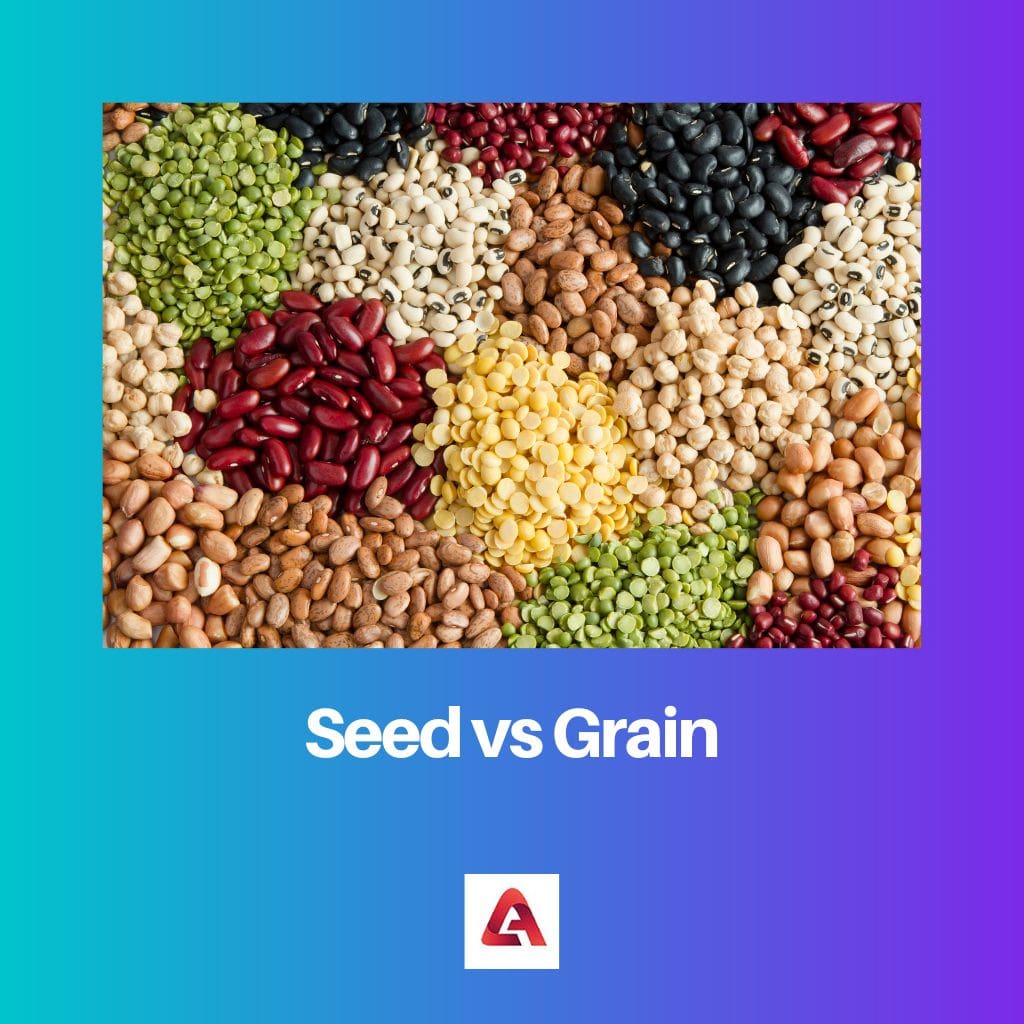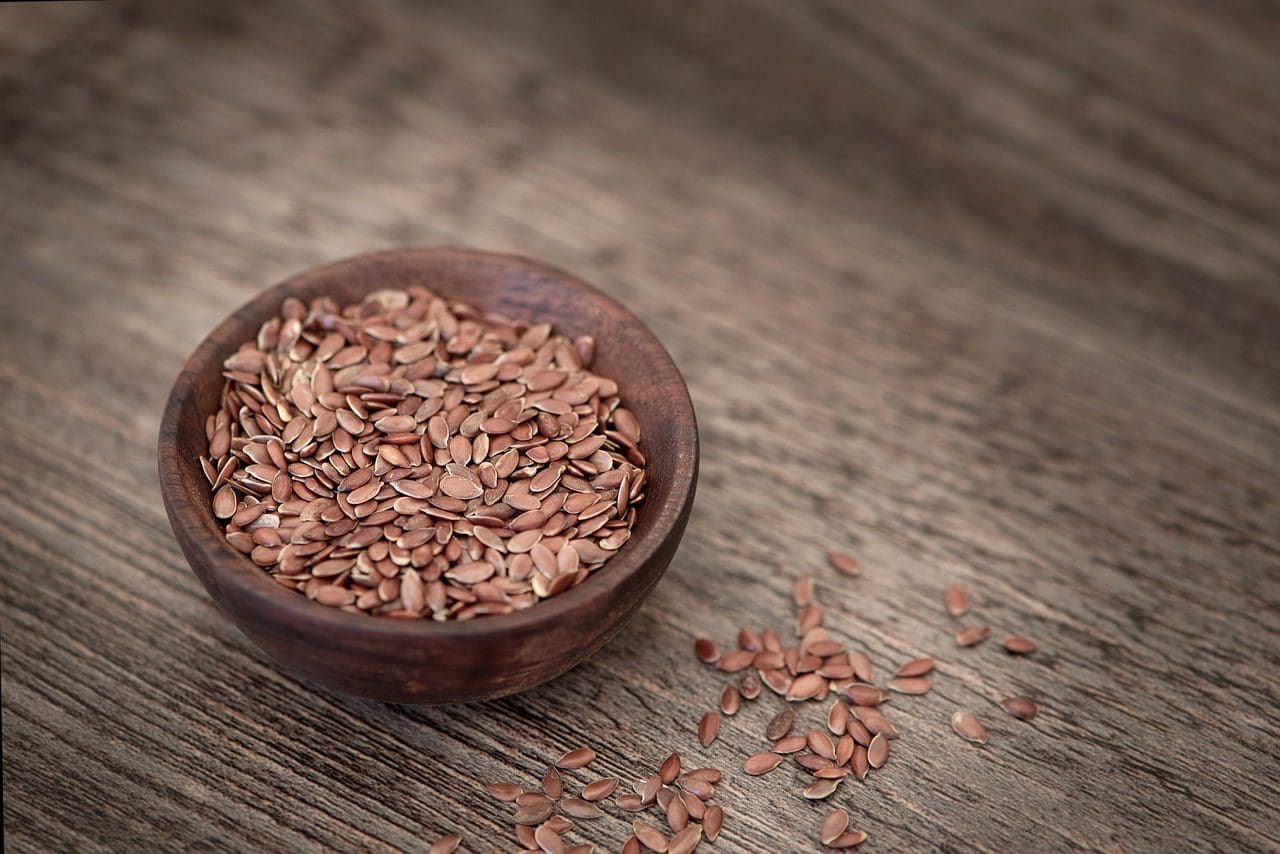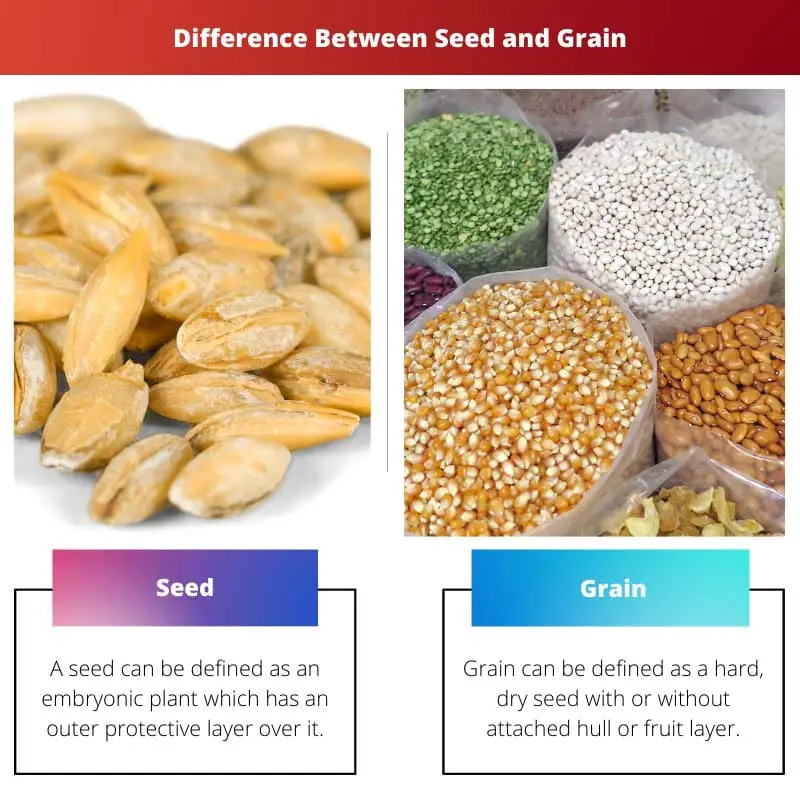Agriculture is the art of cultivating plants and livestock; for every crop, there’s something that is cultivated and then harvested to get food for humans. There is a large variety of crops grown in the fields bearing different types of grains or seeds.
Fruits are bearded on trees, and vegetables and other grains are seeds grown in the field. Every grain or seed has a difference in appearance, taste, cultivation method, and crop type. For example, wheat is different from maize or Jowar.
Grains and seeds can be of several varieties in quality as well; the quality of the produced grain or seed depends upon the fertilizers used for growing the crops, the soil they are grown in, and the type of seeds used for their cultivation.
Key Takeaways
- Seeds are the reproductive units of plants, containing an embryonic plant and stored nutrients; grains are a specific type of seed harvested from cereal plants such as wheat, rice, and corn.
- Grains are primarily consumed as food, either whole or processed into products like flour and pasta; seeds have diverse uses, including food, oil production, and planting.
- Grains are characterized by their hard outer layer (bran), starchy interior (endosperm), and nutrient-rich inner part (germ).
Seed vs. Grain
Seeds are the reproductive part of a flowering plant and are used to propagate many different types of plants. Examples include sunflower seeds, chia seeds, and pumpkin seeds. Grains are a staple food source for many cultures, rich in carbohydrates, fiber, vitamins, and minerals, but can contain gluten.

Comparison Table
| Parameters of Comparison | Seed | Grain |
|---|---|---|
| Definition | An ovule which contains the embryo. | Product of fusion of seed coat and fruit. |
| Purpose | Growing other plants | Human consumption |
| Components | The seed coat, embryo, and endosperm | Bran, endosperm, seed coat, and embryo |
| Food | Embryo | Fruit part |
| Uses | Oil extraction | Making flour and cereals |
What is Seed?
A seed can be defined as an embryonic plant with an outer protective layer. It is the heart part of any plant which is edible.
Seeds are formed in the process of reproduction in seed-bearing plants. Plants that bear seed are known as spermatophytes.
Seeds consist of three basic parts: an embryo, a seed coat, and stored food.
An embryo is developed from a fertilized egg inside the seed embryo and starts to develop a leaf and stem.
Seed coat- the covering protects the embryo from drying until the conditions are favorable for germination.
Stored food is known as endosperm, which nourishes the embryo until the seed starts making food.
Seed formation completes the Reproduction of seed plants which starts from the Growth of flowers in the plant. The embryo grows from the zygote, and the seed coat Grows from the ovule lined.
Some examples of seeds are Flax seed, Sesame seed, sunflower seed, Chia seeds, hemp seed, etc.; every seed has some other good qualities which are beneficial for human health to some extent.
Seeds are grown for human purposes; seeds can be used in numerous ways; for example, one of the most general purposes of seed is to get oil from it, some of them are eaten raw, and others are used in regular cooking to add on the taste and fragrance to food, etc.
The seed is nutritious, but sometimes few grains are misunderstood as seeds and vice versa; for example, rice is a seed, but it is referred to as a grain, and the same case is with quinoa, which is referred to as a grain, but it is a seed.

What is Grain?
Grain can be defined as a hard, dry seed with or without an attached hull or fruit layer harvested for human consumption.
Grains are also referred to as cereals or ‘cereal grains.’
Grains are harvested from grassy crops; grains grow in large quantities and clusters. The grain is hard on the outer surface, shed during winnowing.
Grains are grown on a large scale, and most of them are the staple food of the natives where the grain is grown; for example, wheat is grown in northern India and is a staple food for north India. Some other examples of grains are barley, maize, millet, etc.
In scientific terms, the grain is the product of the fusion of seed coat and fruit. There are a few grains in which the outer shell (the hard portion) is separated from the grain to get the edible seed, for example, peanuts.
Grains provide food from the fruit part of the plant, for example, in wheat, wherein the food is derived from the ground fruit part. Numerous things are made from grains, for example, chapati, pasta, bread, etc.
Grains are extremely nutritious and contain nutrients like dietary fiber, complex carbohydrates, minerals like magnesium, selenium, vitamins, etc. These nutrients are important for human health as they provide energy to the body.
Grains are classified into two categories like whole grain and refined grain. Whole grain contains whole grain kernel that is bran, endosperm, and germ. On the other hand, refined grain is milled and proceeded in which germs and bran are removed.
Whole grains are preferred more than refined grains, as they are more nutritious.
Nowadays, people avoid eating grains like wheat because it has gluten which is sometimes allergic to some people, but it should not be avoided by people who do not have any gluten allergy.

Main Differences Between Seed and Grain
- The seed is an ovule that contains an embryo, whereas the grain is the product of the fusion of the seed coat and the fruit.
- The seed is grown for planting other plants, whereas the purpose of grains is to harvest them for human consumption.
- Seeds provide food from the embryo part, and grain provides food from the fruit part.
- The seed has three main components: an embryo, seed coat, and endosperm, whereas grain has four components: bran, endosperm, germ, and seed coat.
- The seed is used for getting oils, whereas grains are used for grinding and making cereals.

- http://www.publish.csiro.au/AN/EA9890797
- https://acsess.onlinelibrary.wiley.com/doi/abs/10.2135/cropsci2011.11.0608

The clear differentiation between seeds and grains, along with the scientific context, makes this article a beneficial resource for those delving into the intricacies of agricultural science.
Indeed, the precision and depth of content reflect a high level of academic rigor.
The in-depth articulation of seed and grain characteristics adds a layer of intellectual depth to the discussion of agricultural essentials. It’s an invaluable resource for students and professionals alike.
Absolutely, the scientific rigor displayed in this article is truly praiseworthy.
The comprehensive coverage of seed and grain attributes is intellectually invigorating. This article sets a high standard for educational content.
The comparison table makes it easier to understand the defining characteristics of seeds and grains. It serves as a valuable reference for anyone studying agriculture or related fields.
I appreciate the clear explanations and scientific approach taken in this article. It’s intellectually stimulating!
I agree, the detailed comparison is enlightening and enriching.
This article serves as a commendable resource for those seeking a well-researched understanding of seeds and grains. The meticulous comparison table adds significant value to the content.
Absolutely, the scholarly approach to analyzing this subject is praiseworthy.
The demystification of seed vs. grain, coupled with examples for context, lends this article an enlightening quality that is both engaging and educational.
I couldn’t agree more. It’s refreshing to see such a comprehensive treatment of these agricultural concepts.
This article provides a deep insight into the differences between seeds and grains, and their significance in the agricultural world. It’s highly informative and educational, breaking down complex concepts in an easy-to-understand manner.
Absolutely, it’s a great read for those interested in the intricacies of agriculture and plant cultivation.
The elucidation on seeds and grains provides a rich understanding of these agricultural essentials, making it a valuable contribution to the discourse surrounding food production and sustainability.
The scientific precision and comprehensive nature of the content offer great value for readers across different backgrounds.
This article is a prime example of how to tackle complex subjects with clarity and depth. Its informative nature is a testament to its quality.
The article highlights the importance of understanding the nuances between seeds and grains in agricultural practice. It fosters critical thinking and deeper appreciation for the processes involved.
Indeed, the distinctions drawn here help in drawing attention to the scientific and practical aspects of crop cultivation.
This article presents the subject matter with a high level of intellectual rigor and clarity. It’s a fantastic resource for enthusiasts and professionals alike.
This post is a treasure trove of knowledge and insights into the world of agricultural staples like seeds and grains. It is a captivating read for anyone looking to deepen their understanding of these vital components of our food system.
I find the detailed explanation of the seed formation process and its key components to be highly informative. It’s a commendable piece that addresses fundamental concepts in agricultural botany.
Absolutely, the depth of knowledge displayed here is truly impressive.